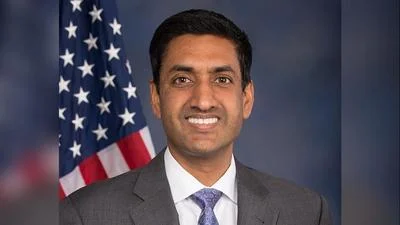John Taylor, Professor of Economics at Stanford University and developer of the "Taylor Rule" for setting interest rates | Stanford University
John Taylor, Professor of Economics at Stanford University and developer of the "Taylor Rule" for setting interest rates | Stanford University
Rising water prices are forcing many households in the United States to choose between rationing water or risking shutoff by leaving bills unpaid. A new study in Environmental Research Letters shows government agencies and water utilities may be underestimating the true number of households at risk of losing affordable access to basic water service – and offers a solution.
“Water affordability is a growing problem and we need new tools to better address it,” said senior study author Sarah Fletcher, an assistant professor of civil and environmental engineering in the Stanford Doerr School of Sustainability and School of Engineering. Aging water infrastructure, climate change, extreme droughts, and increasing costs tied to water quality maintenance all threaten to exacerbate the challenge, which disproportionately affects low-income households and communities of color.
“Applying the methods we demonstrated in this study could provide a better sense of how many households are currently struggling to pay their water bills,” said Aniket Verma, a PhD student in civil and environmental engineering who co-led the June 21 study with Jennifer Skerker, also a PhD student.
Accurate assessments of water affordability are important because they inform decisions about utility rates, assistance programs, and eligibility for government financing for infrastructure improvements. The U.S. Environmental Protection Agency (EPA), which sets limits for contaminants including dangerous “forever chemicals” in drinking water, considers affordability when evaluating the impact of new standards on water suppliers and when negotiating deadlines for wastewater treatment facilities to comply with regulations.
Water utilities, non-governmental organizations (NGOs), and regulators generally assess water affordability by looking at total monthly water bills as a portion of household income or what experts call the “affordability ratio.” The method has faced growing criticism because affordability ratios fail to capture a given household’s actual water needs, which depend on family size, appliance efficiency, and other factors. Furthermore, the affordability ratio is usually obtained as an average or snapshot in time of a census block or city, meaning the metric is not specific to individual households or necessarily accurate over the longer term.
“The traditional metric compares a household’s water bill to the household’s income as a way of trying to assess the household’s ability to pay," said Fletcher. "But there are important nuances that this metric cannot capture and it’s not granular enough in many cases.”
The new Stanford research suggests metrics based on past payment behavior at the individual household level can provide a clearer view for water planners and regulators, policymakers, and NGOs. To explore new ways of evaluating water affordability, researchers drew upon 13 years of data from about 40,000 households in Santa Cruz.
Fourteen percent of surveyed U.S. households report that a $12 increase in monthly bills would lead them to cut back on essential goods. Researchers applied delinquency metrics based on payment patterns similar to those used for housing and energy affordability assessments.
“Delinquency metrics aim to gauge a given household’s ability to pay based on how well that household has actually been able to pay in the past,” said Skerker. “Our study is the first to compare potential delinquency metrics that might capture different aspects than the affordability ratio.”
Fletcher's team designed three delinquency metrics: frequency (how often payments are missed), duration (how long payments remain unpaid), and severity (the amount owed). The study revealed census blocks with similar ratios but wide-ranging delinquency behaviors indicating nuanced struggles within populations often overlooked by traditional approaches.
One obstacle is that billing information isn't publicly available without utility cooperation through data use agreements. However, Fletcher noted interest among utilities targeting outreach efforts toward at-risk households regarding financial assistance programs.
“I see real potential value for uptake by utilities themselves," said Fletcher. "Water security is serious; any advances addressing it could help many people.”
Study co-author Benjamin Rachunok worked on this research while affiliated with Stanford University but now serves North Carolina State University along with additional co-authors from University of Wisconsin-Madison. This research was supported by Stanford Impact Labs and Stanford UPS Endowment Fund.
___




 Alerts Sign-up
Alerts Sign-up